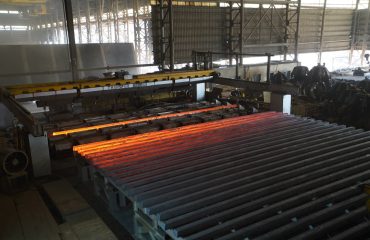The global steel industry is a complex network of producers, suppliers, and buyers spanning continents. Successfully navigating this landscape requires robust and reliable trade finance solutions. This comprehensive guide explores the essential tools that facilitate smooth and secure steel transactions, mitigating risks and optimizing profitability for all stakeholders.
Letters of Credit (LCs): The Cornerstone of Steel Trade Finance
Letters of credit are arguably the most crucial trade finance instrument in the steel industry. They act as a guarantee from a buyer’s bank (issuing bank) to a seller (beneficiary) that payment will be made upon fulfillment of specific conditions. These conditions, meticulously detailed in the LC, typically involve presenting documents proving shipment, quality, and quantity of the steel. The use of LCs significantly reduces counterparty risk for both buyers and sellers, particularly in international transactions where trust might be limited. Different types of LCs exist, including irrevocable LCs (offering the highest level of security) and confirmed LCs (providing added security through a confirming bank). For steel transactions involving large volumes and high value, LCs are almost indispensable.
Bank Guarantees: Securing Performance and Payment
Bank guarantees provide another layer of security in steel trade. These instruments assure the buyer that the seller will fulfill its contractual obligations, such as delivering the steel on time and according to specifications. Conversely, they can also assure the seller that the buyer will pay as agreed. Performance guarantees protect against potential delays or breaches of contract, while payment guarantees ensure payment even if the buyer defaults. The bank issuing the guarantee acts as a guarantor, stepping in to cover losses if the underlying contract is not fulfilled. This adds confidence and trust to the transaction, especially when dealing with new or less established trading partners.
Forfaiting: Financing Long-Term Steel Export Deals
Forfaiting is a specialized form of trade finance particularly useful for long-term steel export contracts. In a forfaiting arrangement, a financial institution (the forfaiter) purchases the seller’s receivables (typically promissory notes or bills of exchange) at a discount, assuming the credit risk associated with the buyer. This allows the seller to receive immediate payment, freeing up working capital and improving cash flow. Forfaiting is particularly relevant for large-scale steel projects or long-term supply agreements, where the seller might otherwise face significant financing challenges. The forfaiter then collects the payments from the buyer over the agreed period.
Factoring: Managing Receivables in the Steel Supply Chain
Factoring involves selling outstanding invoices to a specialized financial institution (a factor) at a discounted rate. This provides immediate access to funds, improving cash flow for steel producers and suppliers. Factoring is particularly beneficial for businesses with a large volume of short-term receivables, allowing them to accelerate their payment cycles and maintain operational efficiency. While factoring may involve a higher discount compared to other methods, it offers a quick and flexible solution for managing working capital in the fast-paced steel industry.
Supply Chain Finance: Optimizing Steel Trade Ecosystem
Supply chain finance encompasses a range of tools and techniques designed to optimize the entire steel trade ecosystem. It goes beyond individual transactions, focusing on improving efficiency and collaboration among all parties involved, from raw material suppliers to end-users. This might involve early payment programs for suppliers, extending credit terms to buyers, or implementing innovative financing solutions to improve logistics and inventory management. By leveraging technology and collaborative platforms, supply chain finance can significantly reduce costs, improve transparency, and strengthen relationships within the steel supply chain. Effective supply chain finance can lead to significant cost savings and increased efficiency across the board.
In conclusion, navigating the intricacies of the global steel trade requires a comprehensive understanding of available trade finance tools. By leveraging these instruments appropriately, steel producers, suppliers, and buyers can mitigate risks, optimize cash flow, and foster stronger, more sustainable relationships across the entire supply chain. Careful selection of the most appropriate tool depends on the specific circumstances of each transaction, including the size, duration, and risk profile involved.
SEO-Friendly Tags:
- Steel Trade Finance
- Letters of Credit Steel
- International Steel Trade Finance
- Commodity Finance Steel
- Supply Chain Finance Steel




